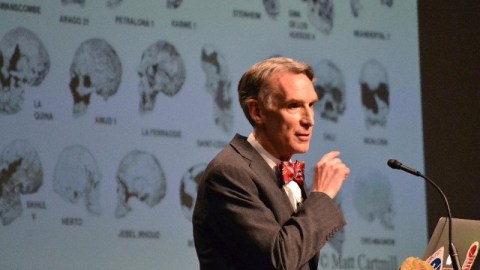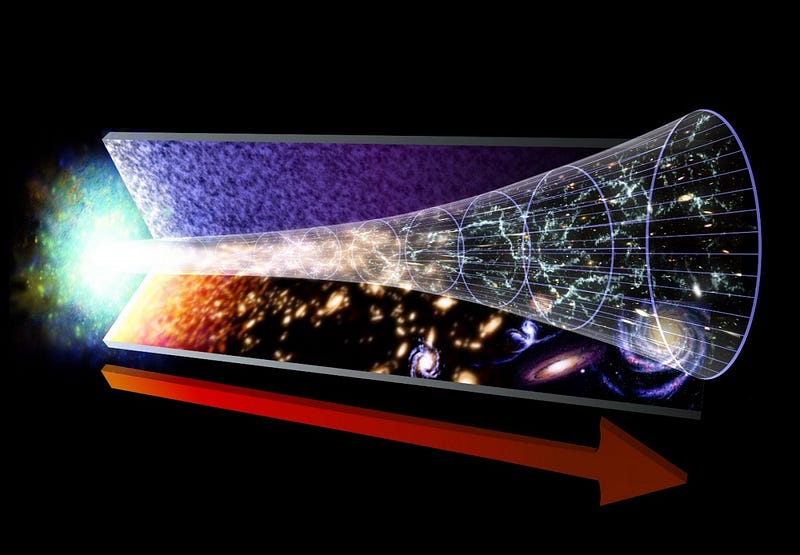Ask Ethan: What Makes A Theory A Scientific One?

There are many different levels, but one key difference separates science from the rest.
“I cannot help fearing that men may reach a point where they look on every new theory as a danger, every innovation as a toilsome trouble, every social advance as a first step toward revolution, and that they may absolutely refuse to move at all.” –Alexis de Tocqueville
If you listen closely to the darkest corners of the internet, you’ll often hear people decry well-established scientific facts like evolution, the Big Bang and even gravity as, “just a theory.” Sure, there might be a big difference between a scientific theory like evolution and the story of biblical creationism, but there’s just as big a difference between atomic theory and the theory of phlogiston. Although one is accepted and one is not, both of those are scientific theories as well. Is there a good, meaningful way to draw this line? Reader Ziggurism wants to know:
The creationist says “evolution is ‘just a theory’, so that means we’re not sure it’s true. Intelligent design is just another theory.” The science advocate responds, “no, the scientific usage of the word ‘theory’ is different than the colloquial usage.” […] But I don’t think this is an honest response. [I]n some cases, like the theory of evolution, the theory of universal gravitation, the theory of relativity, or quantum theory, yes, these are scientific models which are experimentally confirmed in certain regimes. But are all scientific uses of the word for such verified theories?
There are a few distinctions here, and because of our sloppiness with language, it’s easy to talk right past one another and enter the realm of misunderstandings. So let’s focus on three separate things we can mean when we talk about a theory in science: an idea, a framework, and a validated, accepted model.

1.) An idea. This is the colloquial use of “theory,” and it applies to ideas that are both good and bad, valid and invalid, scientific and non-scientific alike. All good scientific theories start out as ideas, like Einstein’s relativity, which started from the idea that light didn’t appear to move away from you more slowly if you chased it. But Jim-down-the-street’s idea that the Moon is a weather balloon that the US Government flies to trick the people of Earth is an idea, too. When someone begins a sentence with, “I have a theory that…” there’s no way to know the quality of that idea without further evaluation. In general, the distinguishing characteristics of a good idea from a bad idea are:
- Plausibility — would this idea be consistent with all the things we already know to be true?
- Uniqueness — would this idea be any different from the older ideas that are already out there?
- Power — does this idea account for many different phenomena or observations, or just one?
- Simplicity — although this is subjective, a good idea tends to not make an explanation more complex than the alternatives. Does this one?
- Testability — finally, is there something we can look at to put this idea to the test, and determine whether evidence supports or refutes it?
While the first four criteria are nice to have in an idea, and can often guide us in our evaluation of an idea’s quality, it’s only the last one that makes a theory scientific or not.
If you can test it and evaluate it based on the evidence you can gather, the measurements you can make, the experiments you can perform and the observations you can undertake, your idea is scientific. This is irrespective of how those tests turn out, by the way.

2.) A framework. Some of the ideas that are all of these things — plausible, unique, powerful, simple and testable — need to have their consequences worked out before they can be tested. These are scientific theories, too! It doesn’t mean that they’re valid scientific theories, necessarily, but science is a lot more than just what’s right in the end. Science is the process of exploration, of going down paths where the destination is uncertain, of uncovering the possibilities, and of allowing nature to surprise you. There are plenty of scientific theories that are exactly these frameworks for exploration, that may or may not turn out to have any validity behind them, including:
- Extra dimensions,
- Supersymmetry,
- Grand Unified Theories (GUTs),
- the theory of Planet Nine,
- and String Theory,
just to name a few. Frameworks that are known to be wrong were scientific in their time, too, like the flat-Earth theory, the geocentric theory, Lamarckian evolution, the steady-state Universe or the theory of planet Vulcan. When a framework is proven wrong, or invalid, it’s discarded until such time (if ever) where the evidence enables it to come back, usually in a different form.

Of the possibilities above, the theory of Planet Nine has some circumstantial evidence supporting it, and observations over the next 10–20 years should confirm or invalidate it. The original GUTs predicted that the proton would decay on timescales of around ~10³⁰ years; our current limits of ~10³⁵ years tell us that those GUT models cannot be correct, but others still might be. Nevertheless, this isn’t the pinnacle of science, this is merely the holding ground for various ideas. While most of these could remain on this list for a very long time, the theory of Planet Nine will either crash-and-burn, or move up to the top spot of what we call theories…

3.) A validated, accepted model. This is the place to be for a scientific theory. Your idea was not only plausible, unique, powerful, simple and testable, it not only was turned into a framework for which consequences could be worked out and predictions could be made, but those predictions were put to the test in every way possible and passed every time. That’s how you get to the top of the scientific food chain when it comes to theories! This is rarefied air up here, where theories like Darwinian evolution, Einsteinian gravity and quantum field theory live. The Big Bang is here, along with cosmic inflation, dark matter and dark energy. And yes, my readers, this is where global warming resides as well.

The thing you must realize is this: these positions aren’t necessarily permanent! These are the leading scientific theories of our time, but they all have inherent limits to their ranges of validity. Perhaps someday String Theory will supplant both Einsteinian gravity and quantum field theory, or perhaps not, and a different theory of quantum gravity will knock Einstein from the mountaintop. This doesn’t mean Einstein was wrong, but rather that we’ve reached the limit of what Einstein’s gravity could tell us, just like Einstein showed us what lay beyond the limits of what Newton’s gravity could tell us. Science is an ever-evolving process by which we gather more information about the world, and the valid scientific theories that are accepted across their field of expertise are the most valuable pieces of knowledge and understanding that we have.
Still, we continue to scrutinize and investigate. We continue to come up with new ideas, and to find new ways to revitalize old ones. With every passing day, the amount of information humans have collected about the Universe continues increase, and so does our scientific understanding of all that there is. There are lots of different ways that a theory can be scientific — so long as it’s testable in principle, it’s scientific — but not every scientific theory turns out to be correct. The greatest joy should be to see which of the tremendous possibilities is the next to rise into the pantheon of validated, accepted scientific models, as that represents the epitome of growth in our knowledge of the Universe. My bet? The nature of why there’s more matter than antimatter in the Universe. But like all ideas that may yet be validated, it’s still only a framework. Stay tuned.
Submit your questions and suggestions for the next Ask Ethan here!
This post first appeared at Forbes. Leave your comments on our forum, check out our first book: Beyond The Galaxy, and support our Patreon campaign!





